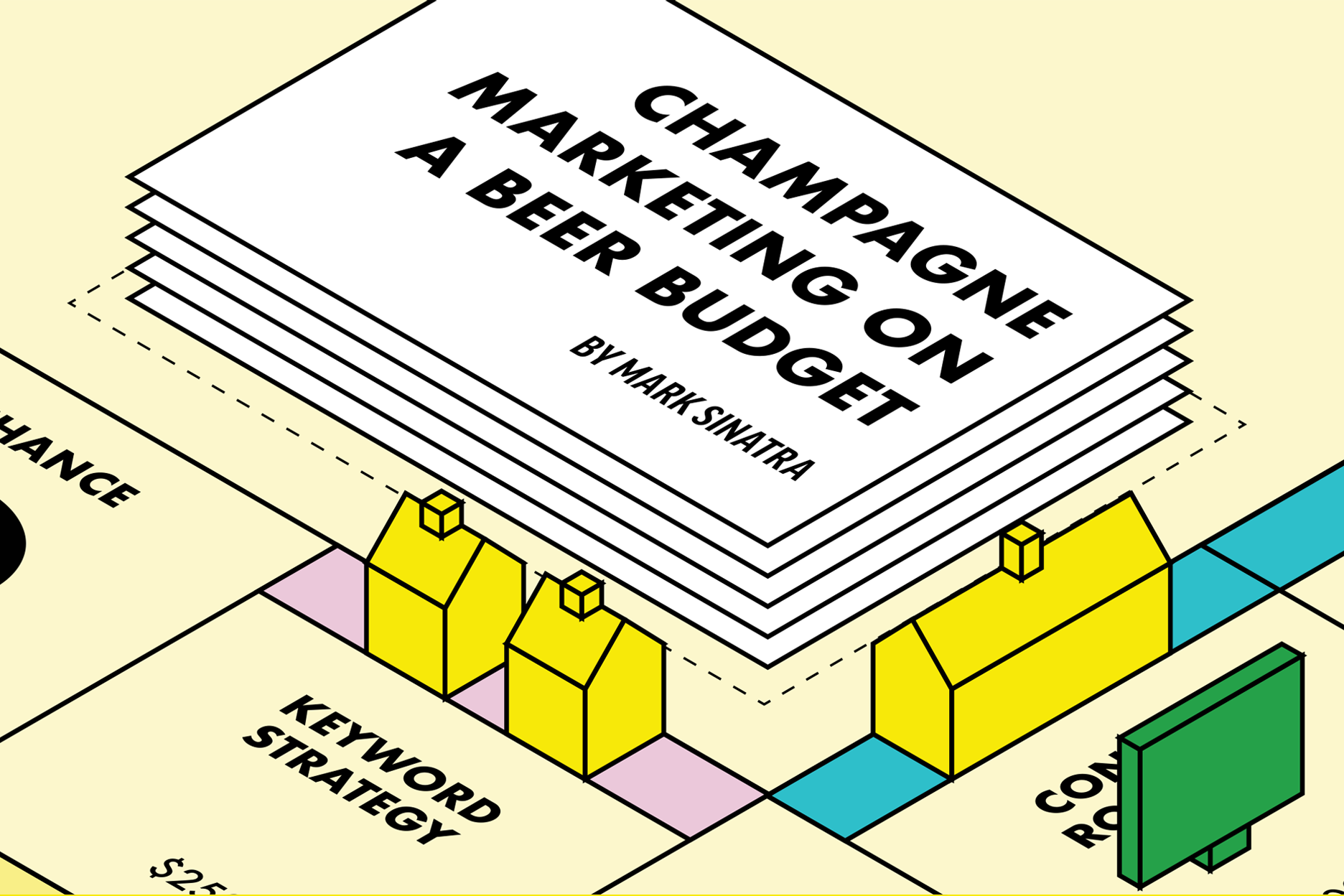The ultimate objective of every marketer is to produce a meaningful and measurable ROI. Unfortunately, having that objective and actually achieving that objective are two very different things. As with any goal and objective, there are three key elements to success – a strategy, a plan, and disciplined execution. But keeping your fingers crossed isn’t a sustainable marketing strategy. And hope isn’t an executable plan.
Before setting out to develop a strategy and plan, it helps to understand where you want your plan to take you. What’s the goal? And with marketing, things like new websites, more social media engagement, or even a boat load of new leads shouldn’t be your ultimate goal. The goal should be sales and top-line revenue growth.
Writing a big revenue number on your conference room white board may help rally your team for growth, but it won’t help you build a marketing strategy and plan. In fact, it can actually be a little intimidating. So how do you achieve such a goal? How do you even start?
The best way to start is to break the revenue goal into smaller objectives by reverse engineering the sales and marketing process. Reverse engineering is exactly as it sounds. It’s the process of working backwards from the conclusion to understand how that goal can be reached.
STEP ONE: SET CLEAR REVENUE GOALS
Setting achievable revenue targets and comprehending their sources is crucial. The first step is to determine the proportion of revenue that needs to come from new business as opposed to the existing customer base. Knowing this target number is the starting point to reverse engineering your marketing strategy.
STEP TWO: HOW MANY NEW CUSTOMERS NEED TO BE SIGNED?
To determine the number of new customers required to meet your revenue objective, divide the target for new business revenue by the average size of a new deal. This process will require some research into the closed deals in your CRM over the last few years. Throw out any outliers (i.e., unusually large or small deals) to determine the average revenue per deal.
STEP THREE: HOW MANY PROPOSALS NEED TO BE PRESENTED?
Use your team’s average closing percentage to determine the number of proposals that will need to be presented. How many proposals did your team pitch to potential clients last year? What percentage of those proposals led to successfully closed deals? Often, sales teams tend to overestimate their closing percentages, so thorough research is essential. Again, employing a CRM tool can facilitate transparency and maintain a realistic metrics.
STEP FOUR: HOW MANY SALES QUALIFIED LEADS (SQLS) NEED TO BE GENERATED?
To answer this question, you first need to understand the percentage of Sales Qualified Leads (SQLs) that have historically received a proposal? Not every qualified sales opportunity is guaranteed to receive a one. There are various factors that can cause the sales process to stall (poor timing, decision-maker changes, budgets, etc.). Again, it’s important to understand your team’s historical percentages in order to determine how many SQLs need to be generated to achieve your revenue growth objective.
STEP FIVE: HOW MANY SALES LEADS NEED TO BE GENERATED?
It’s important to understand at all sales leads aren’t equal. Not everyone who “raises their hand“ to demonstrate interest or a desire to learn more warrants the time and attention of your sales team. This becomes clear when you set clear criteria/definitions for lead types and track their conversion from one stage to the next (i.e., “Lead” to “MQL” to “SQL”).
These definitions may help.
A “Lead” is any new contact that’s generated who demonstrates some interest in what your company offers.
An “MQL” (Marketing Qualified Lead) is a “Lead” that fits your target persona criteria. This means they exhibit the characteristics (type of company, size of company, geography, level of decision-maker, etc.) that are similar to that of your current customer base.
A “SQL” (Sales Qualified Lead) is an “MQL” whose behavior or characteristics warrant the immediate attention of a salesperson (i.e., a decision-maker of a target account who views one of your recorded webinars).
Answering the questions outlined in the steps above and understanding the conversion ratios between each category will help you determine the quantity of the various lead types (Lead, MQL, and SQL) that will yield the number of proposals and closed deals required to drive your revenue goals.
With such clear objectives it will now make sense to plan the tactics and campaigns that will drive the required marketing output. Where will the new leads come from?
- The outbound prospecting of your team
- Referrals
- Brokers
- Networking events
- Email marketing
- Social media
- Digital ads
- Inbound marketing/website
This process of reverse engineering not only aids in setting attainable marketing objectives but also allows each aspect of the calculation to serve as ongoing key performance indicators (KPIs) throughout the year. By tracking and comparing your conversion rates against historical and benchmark data, you can continuously refine your marketing strategy and develop a pragmatic ROI model for future marketing investments.
-
SHARE
- Copy to clipboard




